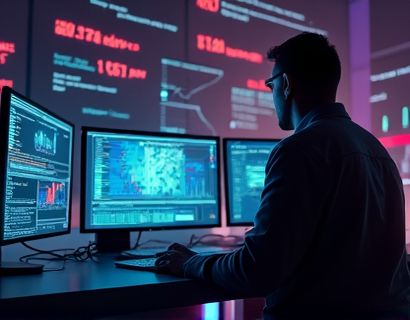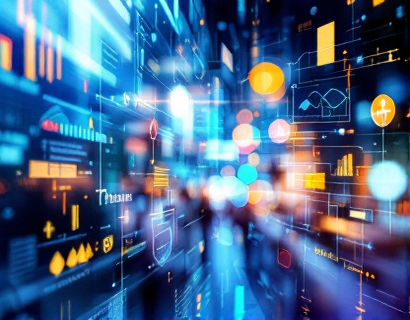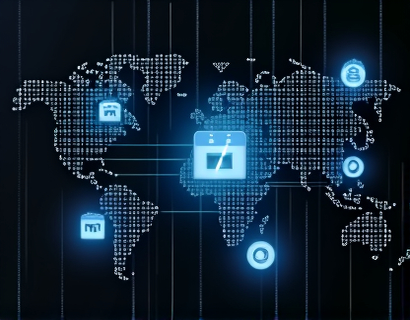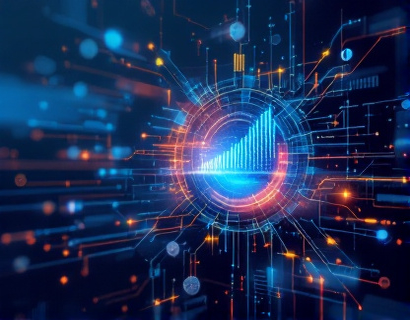Blockchain-Powered Asset Tokenization: Bridging Physical Assets with Digital Liquidity
In the evolving landscape of finance and asset management, the integration of blockchain technology has emerged as a transformative force. One of the most promising applications of blockchain is asset tokenization, a process that bridges the gap between physical assets and the digital world. This technology enhances market accessibility and liquidity by converting real-world assets into digital tokens on a blockchain network. Asset tokenization not only simplifies the ownership and transfer of assets but also opens up new avenues for investment and management.
The concept of asset tokenization involves representing physical assets, such as real estate, art, infrastructure, and even intangible assets like patents and intellectual property, as digital tokens on a blockchain. These tokens are unique digital representations that mirror the properties and rights associated with the underlying asset. The blockchain's inherent characteristics, such as decentralization, transparency, and immutability, ensure that these digital tokens are secure, verifiable, and easily tradable.
Enhancing Liquidity through Tokenization
Traditional asset markets often suffer from illiquidity, where assets take a long time to buy or sell, and transactions can be costly and complex. Asset tokenization addresses this issue by breaking down barriers to entry and increasing the efficiency of asset trading. Digital tokens can be bought, sold, and traded 24/7 on various blockchain-based platforms, providing investors with greater flexibility and access to a wider range of assets.
For instance, real estate, traditionally one of the least liquid asset classes, can be tokenized to create fractional ownership opportunities. This means that instead of requiring a large upfront investment to purchase a property, multiple investors can buy shares of a property in the form of tokens. This democratizes access to real estate investment, making it more accessible to a broader audience and enhancing overall market liquidity.
Improving Market Accessibility
Asset tokenization significantly improves market accessibility by lowering the barriers to entry for both individual investors and institutional players. The traditional high minimum investment requirements and complex legal processes are streamlined through tokenization. Digital tokens often require smaller investment amounts, allowing more people to participate in the market. This inclusivity fosters a more diverse and dynamic market environment.
Moreover, the global nature of blockchain networks means that asset tokenization transcends geographical boundaries. Investors from around the world can access and trade tokens without the need for intermediaries, reducing transaction costs and expanding market reach. This global accessibility is particularly beneficial for assets that were previously confined to local or regional markets, now able to attract international interest and capital.
Ensuring Security and Transparency
One of the core advantages of blockchain technology is its ability to provide a secure and transparent environment for asset transactions. The immutable ledger of the blockchain ensures that once a transaction is recorded, it cannot be altered or deleted. This feature enhances trust among participants, as all transactions are verifiable and auditable.
Smart contracts, self-executing contracts with the terms directly written into code, play a crucial role in asset tokenization. They automate and enforce the rules of asset transfer and ownership, reducing the need for intermediaries and minimizing the risk of fraud. Each step in the tokenization process, from issuance to trading to settlement, is recorded on the blockchain, providing a clear and transparent history of the asset's ownership and transactions.
Use Cases of Asset Tokenization
The applications of asset tokenization are vast and varied, spanning multiple industries and asset types. Here are some notable use cases:
- Real Estate: Tokenization of property interests allows for fractional ownership, making real estate more accessible and liquid. It also enables the creation of new financial products, such as real estate investment trusts (REITs) in token form, which can be traded on cryptocurrency exchanges.
- Art and Collectibles: Digital tokens can represent ownership of physical art pieces or unique collectibles, ensuring authenticity and provenance. This not only protects the value of the art but also facilitates easier trading and broader market reach.
- Infrastructure: Tokenization of infrastructure assets, such as bridges, roads, and utilities, can attract diverse investment and improve maintenance and management through decentralized governance models.
- Intellectual Property: Patents, copyrights, and trademarks can be tokenized to create tradable assets, providing creators and owners with new revenue streams and better control over the use and distribution of their intellectual property.
These use cases demonstrate the versatility and potential of asset tokenization to transform traditional asset management and open up new opportunities for investors and asset holders.
Challenges and Considerations
Despite its numerous benefits, asset tokenization also faces several challenges that need to be addressed. Regulatory uncertainty remains a significant hurdle, as different jurisdictions have varying approaches to blockchain and tokenized assets. Clear and consistent regulations are essential to foster innovation while protecting investors and maintaining market integrity.
Technical challenges, such as scalability and interoperability of blockchain platforms, also need to be overcome to ensure smooth and efficient token transactions. Additionally, the security of smart contracts and the overall tokenization system must be rigorously tested and audited to prevent vulnerabilities and attacks.
Education and awareness are crucial for the widespread adoption of asset tokenization. Both investors and asset managers need to understand the technology and its implications to make informed decisions. Providing comprehensive resources and support can help bridge the knowledge gap and accelerate the adoption of this innovative approach.
Future Prospects
The future of asset tokenization looks promising, with ongoing developments in blockchain technology and increasing regulatory clarity. As more assets are tokenized and integrated into digital ecosystems, the financial market is likely to become more efficient, inclusive, and dynamic. The potential for cross-chain interoperability and the integration of other decentralized finance (DeFi) applications will further enhance the capabilities of asset tokenization.
In conclusion, blockchain-powered asset tokenization represents a revolutionary approach to asset management, offering enhanced liquidity, market accessibility, and security. By bridging the gap between physical assets and the digital world, this technology empowers individuals and businesses to unlock the full potential of their assets, paving the way for a more connected and prosperous financial ecosystem.










































